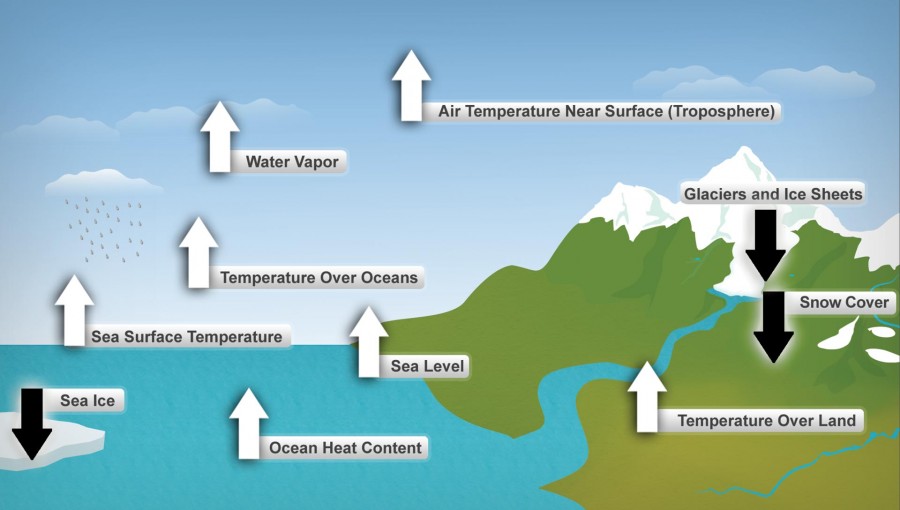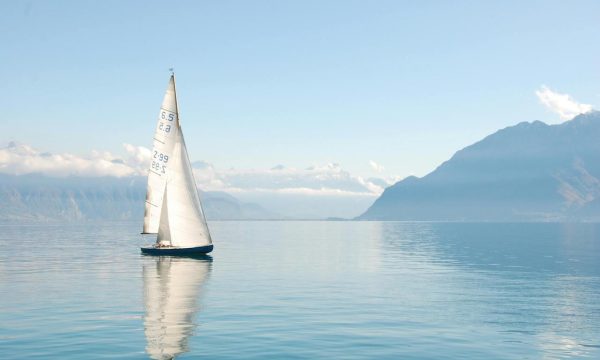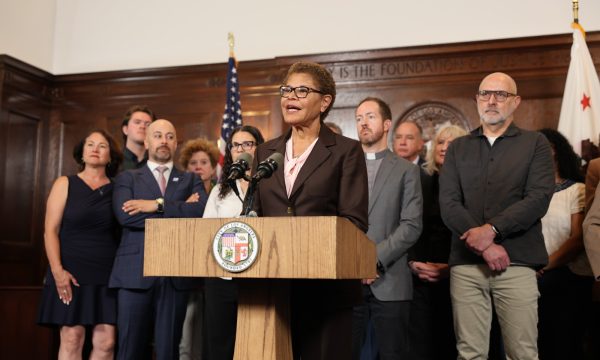
Figure source: NOAA NCDC, based on data updated from Kennedy et al. 2010
You will hear about it everywhere today: Climate change here, Climate change there. In layman’s terms, a team of more than 300 experts assess the science of “climate change” and its impacts across the United States, now and throughout this century. They document related impacts and responses for various sectors and regions, with the goal of better informing public and private decision-making at all levels.
On Tuesday, the Obama Administration unveiled the third U.S. National Climate Assessment. The findings underscore the supposed need for urgent action to combat the threats from climate change, protect American citizens and communities today. Here are some highlights:
Climate-Change Impacts in Regions across America:
• Northeast – Maine, New Hampshire, Vermont, Massachusetts, Rhode Island, Connecticut, New York, New Jersey, Delaware, Pennsylvania, Maryland, and District of Columbia: “Sixty-four million people are concentrated in the Northeast. The high-density urban coastal corridor from Washington, DC, north to Boston is one of the most developed environments in the world, containing a massive, complex, and long-standing network of supporting infrastructure. The Northeast also has a vital rural component.” Communities in the Northeast “are affected by heat waves, more extreme precipitation events, and coastal flooding due to sea level rise and storm surge.” (NCA Highlights: Northeast; NCA Highlights: Overview)
• Southeast and Caribbean –Virginia, W. Virginia, Kentucky, Tennessee, Georgia, Alabama, Arkansas, S. Carolina, N. Carolina, Mississippi, Florida, Louisiana, and the Caribbean Islands: The Southeast and Caribbean region “is home to more than 80 million people and some of the fastest-growing metropolitan areas… The Gulf and Atlantic coasts are major producers of seafood and home to seven major ports that are also vulnerable. The Southeast is a major energy producer of coal, crude oil, and natural gas.” “Decreased water availability, exacerbated by population growth and land-use change, causes increased competition for water in this region. There are also increased risks associated with extreme events such as hurricanes.” (NCA Highlights: Southeast & Caribbean; NCA Highlights: Overview)
• Midwest – Minnesota, Michigan, Iowa, Indiana, Ohio, Missouri, Illinois, and Wisconsin: “The Midwest’s agricultural lands, forests, Great Lakes, industrial activities, and cities are all vulnerable to climate variability and climate change.” “Longer growing seasons and rising carbon dioxide levels increase yields of some crops, although these benefits have already been offset in some instances by occurrence of extreme events such as heat waves, droughts, and floods.” (NCA Highlights: Midwest; NCA Highlights: Overview
• Great Plains – Wyoming, N. Dakota, S. Dakota, Montana, Nebraska, Kansas, Oklahoma, and Texas: The Great Plains region “experiences multiple climate and weather hazards, including floods, droughts, severe storms, tornadoes, hurricanes, and winter storms. In much of the Great Plains, too little precipitation falls to replace that needed by humans, plants, and animals. These variable conditions already stress communities and cause billions of dollars in damage. Climate change will add to both stress and costs.” “Rising temperatures lead to increased demand for water and energy and impacts on agricultural practices.” (NCA Highlights: Great Plains; NCA Highlights: Overview)
• Southwest – California, Nevada, Arizona, New Mexico, Utah, and Colorado: “The Southwest is the hottest and driest region in the United States. Climate changes pose challenges for an already parched region that is expected to get hotter and, in its southern half, significantly drier. Increased heat and changes to rain and snowpack will send ripple effects throughout the region… and its critical agriculture sector.” “Drought and increased warming foster wildfires and increased competition for scarce water resources for people and ecosystems.” (NCA Highlights: Southwest; NCA Highlights: Overview)
• Northwest – Idaho, Oregon, and Washington: “The Northwest’s economy, infrastructure, natural systems, public health, and agriculture sectors all face important climate change related risks. Impacts on infrastructure, natural systems, human health, and economic sectors, combined with issues of social and ecological vulnerability, will unfold quite differently in largely natural areas, like the Cascade Range, than in urban areas like Seattle and Portland or among the region’s many Native American Tribes.” “Changes in the timing of streamflow related to earlier snowmelt reduce the supply of water in summer, causing far-reaching ecological and socioeconomic consequences.” (NCA Highlights: Northwest; NCA Highlights: Overview)
• Alaska: “Over the past 60 years, Alaska has warmed more than twice as rapidly as the rest of the United States…The state’s largest industries, energy production, mining, and fishing—are all affected by climate change.” “Rapidly receding summer sea ice, shrinking glaciers, and thawing permafrost cause damage to infrastructure and major changes to ecosystems. Impacts on Alaska Native communities increase.” (NCA Highlights: Alaska; NCA Highlights: Overview)














